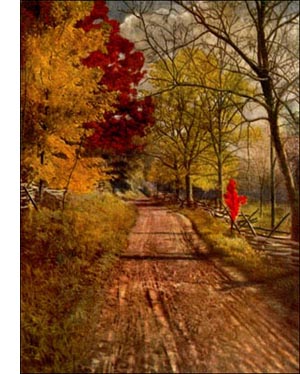Washington Thorn Tree
 Washington Thorn (C. cordata, Ait.)-Vigorous tree, compact, 25 to 40 feet high. Thorns numerous, slender. 1 to 2 inches long. Leaves triangular, 1 to 3 inches long, with 3 to 7 acute lobes, serrate, cordate at base, thin, shining, vivid red in autumn: petioles slender, long. Flowers, May, many in corymb, 1/3 inch across, styles 5, stamens 20, anthers. Fruits, September, small, flat, scarlet, shining, hanging late into winter. Preferred habitat, moist woods. Distribution, Virginia to Alabama, to Illinois. Uses: A desirable ornamental and hedge thorn.
Washington Thorn (C. cordata, Ait.)-Vigorous tree, compact, 25 to 40 feet high. Thorns numerous, slender. 1 to 2 inches long. Leaves triangular, 1 to 3 inches long, with 3 to 7 acute lobes, serrate, cordate at base, thin, shining, vivid red in autumn: petioles slender, long. Flowers, May, many in corymb, 1/3 inch across, styles 5, stamens 20, anthers. Fruits, September, small, flat, scarlet, shining, hanging late into winter. Preferred habitat, moist woods. Distribution, Virginia to Alabama, to Illinois. Uses: A desirable ornamental and hedge thorn.This species comes nearer than any of its relatives to the typical heart-shaped leaf, hence its Latin name. As the upper course of the Potomac River is the northernmost limit of its natural range, we may guess that it takes its common name from the capital city.
Very early, the Virginians sent the seed of this thorn to friends at home, so that it has long adorned European gardens. In the colonies, it was extensively planted for hedges. It proved hardy in all the Middle States, and is now naturalised by escape from old hedges in New York, Pennsylvania and Delaware.
The compact habit of the tree, and the great multitude of its slender spines make it useful as a hedge plant. Besides, it is thrifty and grows rapidly. The flowers and berries make up in numbers for their small size. When the bright green foliage turns to vivid reds in the fail, the tree has already been conspicuous for some weeks by its coral red berries, which persist often till spring.